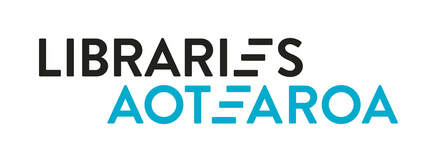In this article, Jasmin Ratana discusses adapting the Te Tōtara Workforce Capability Framework for the Whanganui District Library team and its new Te Waka Hou framework.
The rhythmic splash of paddles in the water kept in time by the call of our elder kuia is a sound that resonates throughout the centuries to our present day. What does that have to do with a capability framework? Not a lot, until you search for the unique qualities in the library workforce serving the Whanganui Community.
Before I saw the Te Tōtara framework, I had never seen a competency framework, let alone a capability one. I had first to understand what it was and how it is helpful to us before I could explain it to others or consider how it could be useful to our library. There were other considerations, too. This framework has a kaupapa Māori base standing on Te Tiriti o Waitangi. How do I feel about this? Does it resonate with me as Māori? Will it resonate with my other colleagues?
A capability framework is about establishing desirable capabilities in a library workforce. It also enables you to identify your own capabilities.
Although it was somewhat long and complex, I found the Te Tōtara framework helpful once I had worked my way through it. I had issues, though.
With Te Tiriti o Waitangi at the base, the framework should provide for a two-culture partnership. Where did the principles of the kaupapa Māori appear in the capability sets, and where were the principles that should stem from Pākehā culture? In addition, the Whanganui District Library already has a Kaupapa Māori framework. Would the two sit together?
Those issues gave birth to the Te Waka Hou project, which was about taking the Te Tōtara framework and making it fit ‘Whanganui’. For the Whanganui community Te Awa Tupua, the Whanganui River is our heart and for Whanganui iwi, it is our revered tūpuna. We identify ourselves with this whakatauki: Ko au te awa ko te awa ko au, I am the river and the river is me. This is where the sound of paddles is heard. Te Tōtara was transformed into a waka.
The hull, made from the original Te Tōtara framework, also represents Te Tiriti o Waitangi, which is to make clear that the waka belongs to all of us. The prow carries the dual values system of our library's Kaupapa Māori Framework and our professional library ethics. The paddles are our capabilities as they pertain to our particular library, so they can be added or subtracted as necessary. There is the addition of a pou or pole, carried on our river waka, to help traverse rapids and travel upstream. The pou represents a new capability set, the Whanganui capability, which gives life to the unique skills of the Māori librarian.
Some might consider it a radical step, but if you listen carefully, you can hear the sound of the water speaking to us from our tūpuna awa, our river of knowledge. Hear the paddles wielded by capable librarians dipping into the water. In this way, we find our place in the team and our personal strengths and develop our navigation skills for the river of knowledge that we care for.
Ruapehu te maunga
Whanganui te awa
Whanganui te Iwi
Tēnā tātau katoa
Jasmin Ratana is the Pou Whiria, Māori Information Librarian for the Whanganui District Library. Jasmin is based at the Alexander Library Te Rerenga mai o te Kāuru, the heritage and research library for the Whanganui District. She works closely with the heritage and archive collections. As Pou Whiria, she is responsible for the Kaupapa Māori Collections. She actively seeks all opportunities to bring a Māori perspective to the library service.



 RSS Feed
RSS Feed